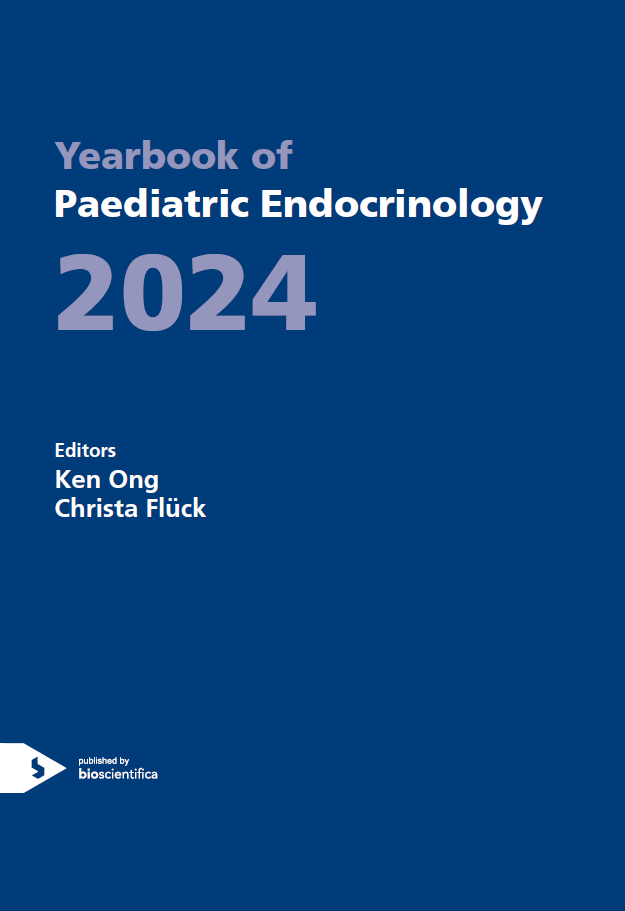7. Puberty
Clinical Guidance and Studies
ey0021.7-1 | Clinical Guidance and Studies | ESPEYB21
7.1. Girls with idiopathic central precocious puberty did not display substantial changes in body mass index after treatment with gonadotropin-releasing hormone analogues
CS Uldbjerg , YH Lim , CH Renault , D Hansen , A Juul , EV Brauner , RB Jensen
ey0021.7-2 | Clinical Guidance and Studies | ESPEYB21
7.2. Differentiation of idiopathic central precocious puberty from premature thelarche using principal component analysis
A Cleemann Wang , CP Hagen , TH Johannsen , AG Madsen , LH Cleemann , P Christiansen , KM Main , A Juul , RB Jensen
ey0021.7-3 | Clinical Guidance and Studies | ESPEYB21
7.3. Sex-independent timing of the onset of central puberty revealed by nocturnal luteinizing hormone concentrations
A Demir , M Hero , A Juul , KM Main
ey0021.7-4 | Clinical Guidance and Studies | ESPEYB21
7.4. Unstimulated luteinizing hormone for assessment of suppression during treatment of central precocious puberty with 6-month subcutaneous leuprolide acetate: correlations with clinical response
KO Klein , BS Miller , N Mauras
ey0021.7-5 | Clinical Guidance and Studies | ESPEYB21
7.5. Rare variants in the MECP2 gene in girls with central precocious puberty: a translational cohort study
APM Canton , FR Tinano , L Guasti , LR Montenegro , F Ryan , D Shears , ME de Melo , LG Gomes , MP Piana , R Brauner , R Espino-Aguilar , A Escribano-Munoz , A Paganoni , JE Read , M Korbonits , CE Seraphim , SS Costa , AC Krepischi , AAL Jorge , A David , LR Kaisinger , KK Ong , JRB Perry , AP Abreu , UB Kaiser , J Argente , BB Mendonca , VN Brito , SR Howard , AC Latronico
ey0021.7-6 | Clinical Guidance and Studies | ESPEYB21
7.6. Familial central precocious puberty due to DLK1 deficiency: novel genetic findings and relevance of serum DLK1 levels
L Montenegro , C Seraphim , F Tinano , M Piovesan , APM Canton , K McElreavey , S Brabant , NP Boris , M Magnuson , RS Carroll , UB Kaiser , J Argente , V Barrios , VN Brito , R Brauner , AC Latronico
ey0021.7-7 | Clinical Guidance and Studies | ESPEYB21
7.7. Contributions of common genetic variants to constitutional delay of puberty and idiopathic hypogonadotropic hypogonadism
MF Lippincott , EC Schafer , AA Hindman , W He , R Brauner , A Delaney , R Grinspon , JE Hall , JN Hirschhorn , K McElreavey , MR Palmert , R Rey , SB Seminara , RM Salem , YM Chan , Consortium Delayed Puberty Genetics
ey0021.7-8 | Clinical Guidance and Studies | ESPEYB21
7.8. Prevalence of deleterious variants in MC3R in patients with constitutional delay of growth and puberty
K Duckett , A Williamson , JWR Kincaid , K Rainbow , LJ Corbin , HC Martin , RY Eberhardt , QQ Huang , ME Hurles , W He , R Brauner , A Delaney , L Dunkel , RP Grinspon , JE Hall , JN Hirschhorn , SR Howard , AC Latronico , AAL Jorge , K McElreavey , V Mericq , PM Merino , MR Palmert , L Plummer , RA Rey , RC Rezende , SB Seminara , K Salnikov , I Banerjee , BYH Lam , JRB Perry , NJ Timpson , P Clayton , YM Chan , KK Ong , S O'Rahilly




